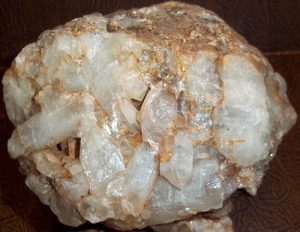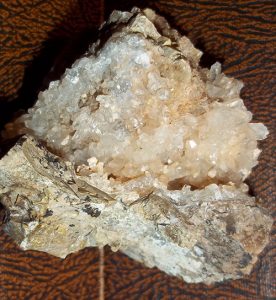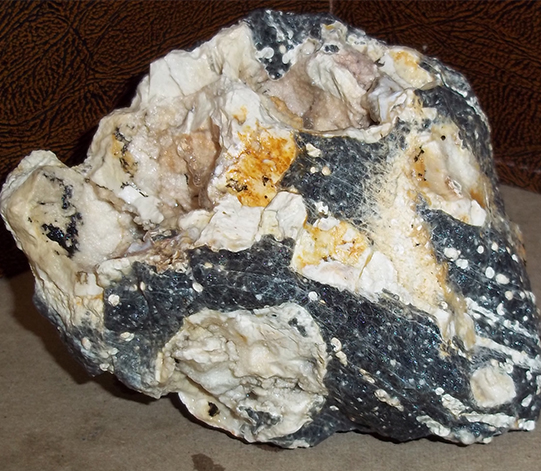
Story and Photos by Alice Sikorski
Also known as the Joshua Tree Parkway, the stretch of U.S. Highway 93 from Interstate 40, just east of Kingman, south to Wickenburg is a nice two-lane to four-lane paved highway. The parkway cuts across Arizona from northwest to southeast. My husband, Dave, and I were traveling from Las Vegas, Nevada to Chandler, Arizona and this parkway seemed like the most direct route.
Origins of Joshua Tree Parkway Name
Mormon settlers crossing the Mojave Desert in the mid-19th century gave Yucca brevifolia the name “Joshua tree” because its shape reminded them of the Biblical character Joshua reaching his hands up to the sky in prayer. Ranchers used the trunks and branches of this plant as fencing, and miners burned them in ore-processing steam engines (https://en.wikipedia.org/wiki/Yucca_brevifolia).
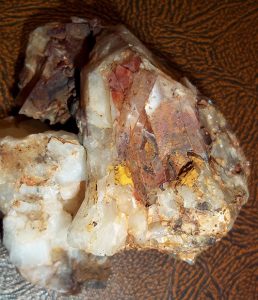
Since we had all day to do a four-hour drive, we planned to make some rock stops along the way to break up the drive. Not being familiar with the area, we checked the Arizona rockhounding books available. The 2001 edition of Gem Trails of Arizona, by James R. Mitchell, listed quite a few rockhounding sites along this highway. Most of them were located in the mountains or at higher elevations. There were quite a few old mine sites and dumps that could be explored, but they were situated up in the mountains. We picked two sites that were close to the highway and didn’t require a high-clearance vehicle to access: Date Creek Quartz Crystals and Wickenburg Nodules.
One drawback was the fact that both these sites are within a two-hour drive from Phoenix. Would these sites be picked over and a waste of time or would they still have some good finds? The quest was on.
Exploring Yavapi County Dig Site
The first place we explored was the Date Creek Quartz Crystals site, in Yavapai County. To get there from Wickenburg, take U.S. 93 north for 23.5 miles to Date Creek Ranch Road. At mile marker 171, there is a large, old, wooden sign that marks the road. The road is gravel and dirt, but is well maintained. Follow this road north for two miles. If you come to a cattle guard, you’ve gone too far.
On the right will be a flat area that is used for camping and has a few stone
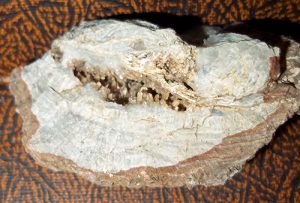
fire rings. Park there and hike east up the hills for approximately 100 yards. After you cross a gully or two, you’ll start to see signs of other rockhounds that have been there before you. Open pits and broken crystal pieces are everywhere. The pits were only about 2 feet deep, and the ground was easy to dig, with small rocks and soil. A quarter-inch screen sifter worked quite well there.
Gem Trails of Arizona says the best crystals are found by digging, but there were plenty of crystals on the ground. The guidebook also states that nice scepter crystals can be found there, but only rarely. The crystals we found ranged from milky to clear to hematite-included. We also found grapefruit-size chunks of crystals. Some crystal points had been broken off the chunks, but they were still interesting specimens.
Vugs and Crystal Discoveries
Small, square vugs were in these chunks, implying that hematite or pyrite once occupied the open space and had been eroded out.
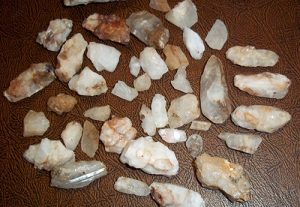
The largest single crystal we found was less than 2 inches long. There seemed to be a lot of hematite (iron) in the area. Some quartz crystals were stained with orange, brown or yellow. The streak test showed a brown streak. Other quartz crystals included or grew around the hematite. These inclusions made for some interesting brown quartz crystals. Small hematite crystals were found in a few specimens.
Mindat.org has photos of two beautiful hematite-after-pyrite pseudomorph specimens from this area. Blue-green chrysocolla stained one quartz crystal we found.
We stopped for about an hour and found more than 40 single quartz crystals and chunks. Date Creek Ranch Road is still a good rockhounding site.
Reviewing the Wickenburg Nodules
The Wickenburg Nodules site is was the second site we explored. The city of Wickenburg is located in Maricopa County, 54 miles northwest of Phoenix. Gem Trails of Arizona described the site as being along U.S. Highway 60, just south of the center of Wickenburg. Southbound U.S. 93 ends in Wickenburg; on the other side of the Hassayampa River, it becomes U.S. 60.
Take El Recreo Drive, just east of the U.S. 93/60 interchange, and drive
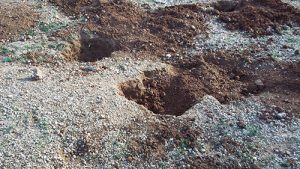
northeast. After one-quarter mile, El Recreo Drive merges into Constellation Road and heads due east. Keep on this road for 2.1 miles. Drive past Smoke View Ranch Road on the left.
The pavement ends just before the full distance, becoming a well-maintained dirt-and-gravel road. Use caution if it has rained recently. The road goes over a rise, drops down, and then proceeds to the right. Just before the road curves to the right, look for the gently rising hills on the left. Continue toward these hills and park as close as you can get to the top. If you come to a streambed and hairpin turn on the main dirt road, you’ve gone too far.
The Wickenburg nodules are located in a band of gray-green rhyolite approximately one-third of the way down from the hilltop. With a glassy texture, this rhyolite looks like spun sugar.
According to Geology.com, “Rhyolite is an extrusive igneous rock with very high silica content. It is usually pink or gray in color with grains so small that they are difficult to observe without a hand lens. Rhyolite is made up of quartz, plagioclase, and sanidine, with minor amounts of hornblende and biotite mica” (http://geology.com/rocks/rhyolite.shtml).
Rhyolite in Caves and Cavities
As you walk up from the road, the sandy ground changes to rocky terrain. The straight-sided hillside area is the rhyolite area. The Wickenburg nodules sometimes have quartz crystals in vugs. The nodules are not considered true geodes, but the cavities and openings in the rhyolite have fine quartz crystals in them. Don’t stick to the front side of the hill; check horizontally all around the hills for additional Wickenburg nodules. Following the rhyolite seam yields the best results.
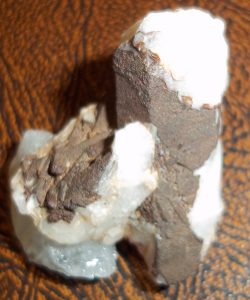
Check for cavities and openings in the rhyolite, as they might contain the quartz crystals that make up the Wickenburg nodules. Work the cavity loose with a chisel and pry bar to further examine the piece. Work these areas carefully so that you do not break the crystals. If you’re not up to the chisel-and-pry bar work, examine the ground below the rhyolite band. Check around the rabbit brush and gullies for pieces that have broken off from the rhyolite and tumbled down the hillside. When poking around bushes, use a stick or probe to check for any critters that might be lurking there before you reach down with your hand.
We spent about an hour at this site and found four nice pieces. The largest piece consisted of obsidian with many white nodules. The nodules ranged from pinhead to golf ball size. In some areas, the white nodules are strung so closely together that they appear to be a solid line. A few nodules were broken open, and the quartz crystals were apparent. Hematite (orange iron stain) and feldspar (pink stain) partially colored the interior. We also found a small rock piece with a solid quartz seam sandwiched between rhyolite layers. This piece should make a great cabochon after a little lapidary work.
Before you wash your specimens with water, check for wickenburgite with a good jeweler’s loupe. This micromineral has been found east of Wickenburg in Maricopa County, but no specific location is noted in mindat.org. These clear, tabular crystals are six-sided. The Wickenburgite crystals can occur singularly, in stacks, or as rosettes. This is a lead, calcium, aluminum, silicon, oxygen and water-based mineral with a formula of Pb3CaAl2Si10O27·4H2O. They luminescence a bright red to salmon color in shortwave UV light.
Even though Gem Trails of Arizona was written over 15 years ago and the sites are within a day’s drive of a large city, these two sites still hold treasure to be found. Our next trip down the Joshua Tree Parkway will include more time for some serious rockhounding at these sites.


